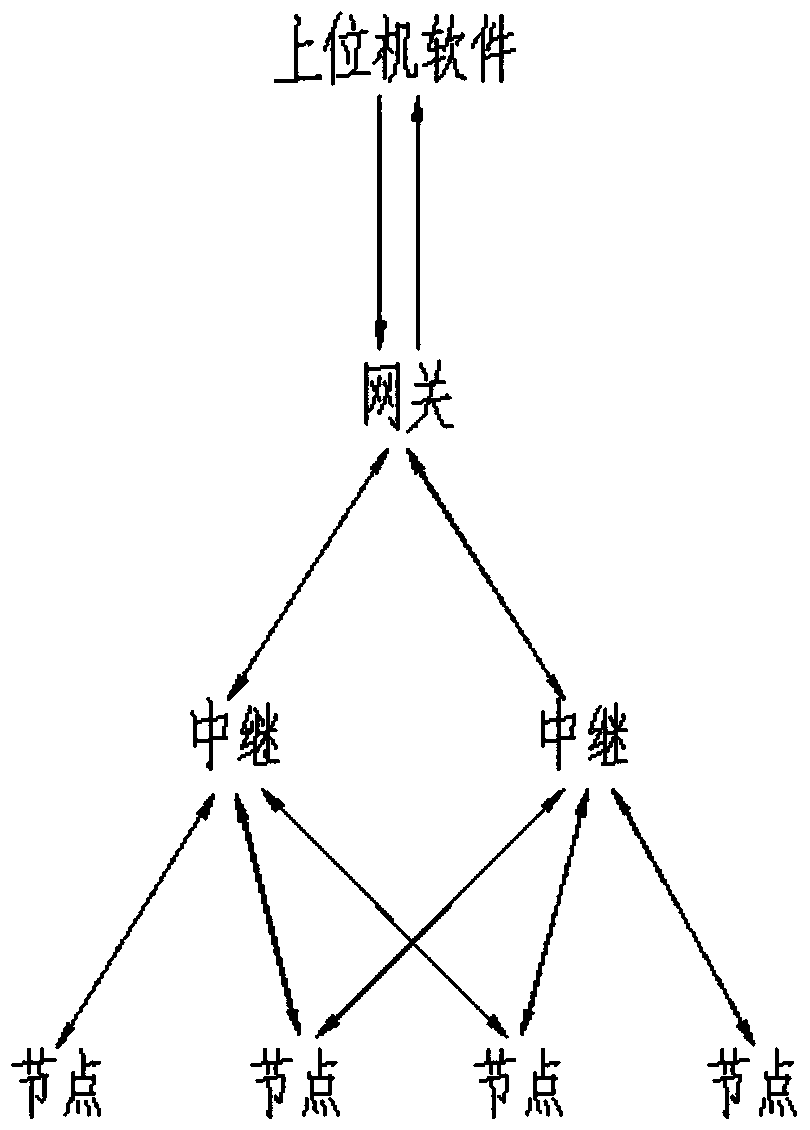LORA relay self-networking method
An ad hoc network and relay node technology, applied in the direction of network topology, electrical components, wireless communication, etc., can solve the problems of low communication range, spending a lot of time, unavailability of communication, etc., to optimize the networking process and increase communication. effect of distance
- Summary
- Abstract
- Description
- Claims
- Application Information
AI Technical Summary
Problems solved by technology
Method used
Image
Examples
Embodiment 1
[0020] Such as figure 1 As shown, a LORA relay ad hoc network method, the state of the ad hoc network is divided into networking state and normal working state, due to the mobility of the end node, so set 30 seconds as a cycle, 0-2 seconds as In the networking stage, 3-30 seconds is the normal communication stage, and the above cycle can be adjusted according to the situation.
[0021] The LORA relay ad hoc network is composed of gateway nodes, relay nodes and terminal nodes.
[0022] Gateway node: Necessary node, has a dominant position, has the function of active networking and periodic networking, generates the gateway network topology, and queries the data of the end node during the normal communication period.
[0023] Relay node: a non-essential node. In the networking stage, report the gateway’s own node information and the broadcast message of the relay gateway node; collect gateway and other relay node information, collect end node information, and generate a relay n...
Embodiment 2
[0033] A LORA relay ad hoc network method, the LORA relay ad hoc network is composed of a gateway node and an end node. Specific steps are as follows:
[0034] 1. The upper computer software sets the end node address and frequency channel to the gateway. End nodes have a relay function.
[0035] 2. The gateway performs broadcast networking according to the end node address set by the host computer software.
[0036] 3. The broadcast message in step 2 is sent to all end nodes, and the relay end node continues to forward the message. When the end node receives the broadcast message, it reports its own node information gateway or other relay end nodes to generate End node network topology; end nodes acting as relays report the collected end node information to gateway nodes, collect end node information, gateway node information, and other end nodes acting as relays, and generate relay network topology; gateway nodes collect End node information and relay end node information ...
PUM
 Login to View More
Login to View More Abstract
Description
Claims
Application Information
 Login to View More
Login to View More - R&D
- Intellectual Property
- Life Sciences
- Materials
- Tech Scout
- Unparalleled Data Quality
- Higher Quality Content
- 60% Fewer Hallucinations
Browse by: Latest US Patents, China's latest patents, Technical Efficacy Thesaurus, Application Domain, Technology Topic, Popular Technical Reports.
© 2025 PatSnap. All rights reserved.Legal|Privacy policy|Modern Slavery Act Transparency Statement|Sitemap|About US| Contact US: help@patsnap.com

